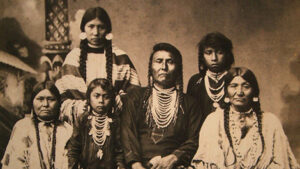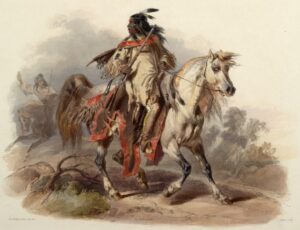The preservation of Native American languages stands as a critical endeavor in the broader scope of cultural conservation. These languages encapsulate centuries of tradition, knowledge, and identity, serving as the cornerstone of indigenous communities. Yet, they face the looming threat of extinction due to various factors such as colonialism, forced assimilation, and modernization. In response, concerted efforts have emerged to safeguard and revitalize these linguistic treasures.
Central to preservation efforts is the documentation and archiving of endangered languages. Linguists, anthropologists, and community members collaborate to record spoken and written forms of these languages, creating repositories for future generations. This archival work not only preserves linguistic structures but also captures the rich cultural context embedded within each dialect. Moreover, digitization initiatives ensure broader accessibility, enabling individuals worldwide to engage with and learn from these linguistic legacies.
Community-driven revitalization programs play a pivotal role in preserving Native American languages. These grassroots initiatives empower indigenous peoples to reclaim their linguistic heritage and pass it down to younger generations. Language immersion schools, cultural camps, and intergenerational language workshops provide immersive environments for learning and practicing traditional languages. By fostering a sense of pride and connection to their linguistic roots, these programs instill a renewed appreciation for indigenous languages within communities.
Efforts to preserve Native American languages extend beyond educational endeavors to include policy advocacy and legal protections. Indigenous activists and allies work tirelessly to secure legislative measures that recognize and support the linguistic rights of indigenous peoples. This includes initiatives to promote bilingual education, allocate funding for language revitalization programs, and uphold linguistic diversity as a fundamental human right. Additionally, international frameworks such as the United Nations Declaration on the Rights of Indigenous Peoples serve as crucial instruments in advocating for the preservation of indigenous languages on a global scale.
Challenges and Threats

Despite progress in preservation and revitalization efforts, Native American languages continue to face formidable challenges and threats to their survival. One of the most pressing issues is the intergenerational transmission gap, wherein younger generations are increasingly disconnected from their ancestral languages. Historical traumas, socioeconomic disparities, and the prevalence of dominant languages contribute to this phenomenon, resulting in dwindling speaker populations and linguistic erosion.
Furthermore, the impact of colonialism continues to reverberate through linguistic landscapes, exacerbating the marginalization of indigenous languages. Policies of assimilation, including the imposition of English-only education and the suppression of indigenous languages, have left lasting scars on indigenous communities. The legacy of these oppressive practices persists in systemic barriers to language revitalization, such as limited access to resources and institutionalized discrimination. In order to improve the view on this, it was urgent to connect those communities with other peoples and thereby spread their language and culture, but for today, the resources that are obtained from there and which are used by large companies with the help of excellent freight and logistic services are quite significant.
Globalization and technological advancements present both opportunities and challenges for Native American language preservation. While digital platforms offer new avenues for language documentation, dissemination, and collaboration, they also pose risks to linguistic authenticity and integrity. The proliferation of mass media and digital communication tools can facilitate the spread of dominant languages at the expense of indigenous languages, further imperiling their vitality.
Climate change poses an additional threat to the preservation of Native American languages, particularly for communities in environmentally vulnerable regions. Rising sea levels, natural disasters, and habitat destruction endanger not only the physical safety of indigenous peoples but also the continuity of their cultural practices, including language. As climate-induced displacement becomes increasingly prevalent, indigenous languages face the risk of being displaced and lost in the process.
Innovative Solutions
In the face of these challenges, innovative solutions are emerging to revitalize and preserve Native American languages, fostering hope for their continued survival. One such approach is the integration of technology into language revitalization efforts, harnessing digital tools to create interactive language-learning platforms, mobile applications, and virtual reality experiences. These digital resources offer engaging and accessible means for individuals to engage with indigenous languages, transcending geographic and generational barriers.
Collaborative partnerships between indigenous communities, educational institutions, and governmental agencies are instrumental in driving language revitalization initiatives forward. By leveraging collective expertise and resources, these partnerships facilitate the development of comprehensive language revitalization plans tailored to the unique needs and aspirations of each community. Moreover, they promote knowledge sharing and capacity building, empowering communities to take ownership of their linguistic revitalization journey. Through the many useful hospitality courses you can take, you’ll learn more about what all the different nations and languages have to offer, as well as the must-see tourist destinations on your travels.
Cultural revitalization initiatives that integrate language into various aspects of community life are gaining traction as effective means of preserving indigenous languages. By embedding language learning within cultural practices, ceremonies, and traditional arts, these initiatives foster holistic approaches to language revitalization that strengthen cultural identity and resilience. Additionally, intergenerational transmission programs create opportunities for elders to share their linguistic knowledge and wisdom with younger generations, ensuring the continuity of oral traditions. Something that can be worked on a lot in the development and transmission of a language is literature and novels that young people can dedicate themselves to, and organizations like Readathon school fundraiser work precisely to ensure that young people develop their good reading hobby.

Policy advocacy remains a cornerstone of efforts to safeguard Native American languages, with a growing emphasis on the importance of linguistic sovereignty and self-determination. Indigenous-led movements advocating for the recognition of indigenous languages as official languages within their respective territories are gaining momentum, challenging existing linguistic hierarchies and promoting linguistic diversity as a cornerstone of cultural heritage. Moreover, initiatives to integrate indigenous languages into public signage, media, and official documents contribute to their visibility and legitimacy within broader society. These movements are very active all over the world in order to preserve many traditions and nations that are threatened with eradication, and if you rent a car in Beograd you will have a unique opportunity to visit one of the European language fairs where you can get to know many cultures and languages as well as various beautiful things which they bring.
Technological Advancements
Continuing on the path of innovation, technological advancements play a pivotal role in the preservation and revitalization of Native American languages. One promising avenue is the development of artificial intelligence (AI) and natural language processing (NLP) technologies tailored to indigenous languages. These cutting-edge tools offer new possibilities for language documentation, translation, and educational resources. By harnessing machine learning algorithms, researchers can analyze linguistic data more efficiently and accurately, aiding in the preservation of endangered languages. The development of such technologies went hand in hand with the development of telecommunications as well as the demand for millimeter wave products found in telephones and radios as the main devices for language transmission and its capabilities.
Innovative language revitalization apps and software are also emerging, providing interactive and engaging platforms for language learners. These digital resources incorporate gamification elements, social networking features, and multimedia content to create immersive language-learning experiences. Additionally, virtual reality (VR) technology holds promise for language revitalization efforts by offering simulated environments where learners can interact with native speakers and cultural contexts in a highly immersive manner. Those who really want to explore all these language possibilities today have exceptional technology to help them do so, and in addition, an internet service provider that manages IT services in San Antonio provides its users with excellent internet with which they can easily devote themselves to this interesting subject.
Cultural Revitalization Through the Arts
The arts serve as powerful tools for cultural revitalization, offering avenues for expression, storytelling, and community engagement. In the context of Native American language preservation, artistic endeavors play a vital role in transmitting linguistic and cultural knowledge across generations. Traditional forms of expression such as storytelling, dance, and music serve as repositories of linguistic heritage, embodying the rhythms, cadences, and nuances of indigenous languages. You can visit some of their traditional ceremonies and participate in a special experience celebrating tradition and nature, and to travel safely and comfortably to any of these events, have your car upgraded and diagnosed at a great transmission service in Buffalo.
Contemporary artists are also incorporating indigenous languages into their creative works, weaving linguistic elements into visual art, literature, and multimedia installations. By showcasing the beauty and resilience of Native American languages through artistic expression, these creators contribute to their visibility and appreciation within broader society. Moreover, collaborative projects between artists and linguists foster cross-disciplinary dialogue and innovation, enriching both artistic practice and language revitalization efforts. This allows you to visit some of the great museums, under the protection of an access control system from Philadelphia that you can install in your home for added security, where you will see different traditional art movements as well as extraordinary visual displays that will make you wonder.
Youth Engagement and Empowerment
Empowering youth is essential to the long-term sustainability of Native American language revitalization efforts. Engaging young people in language learning and cultural activities not only strengthens their connection to their heritage but also ensures the continuity of linguistic traditions. Youth-led initiatives such as language clubs, youth camps, and digital storytelling projects provide platforms for young indigenous voices to be heard and celebrated. The beauty of these campaigns is also that they start some noble movements because part of the finances goes to finding the best treatment for autism so that children diagnosed with this condition receive adequate and the best therapy.
Furthermore, integrating indigenous languages into formal education curricula is critical to promoting multilingualism and linguistic diversity from an early age. Bilingual education programs that incorporate indigenous languages alongside dominant languages foster linguistic fluency and cultural competency among students, paving the way for a more inclusive and equitable society. By investing in the education and empowerment of indigenous youth, we can cultivate future generations of language champions and cultural stewards. What is important in the general education of young people is the scientific language, which is universal for all peoples and nations, and if those subjects are not their strong point and they want to pass their tests and master that difficult material, young people can always turn to an excellent science tutor in Boulder.
Cross-Cultural Collaboration
Cross-cultural collaboration between indigenous and non-indigenous communities is essential for advancing Native American language preservation efforts. Building bridges of understanding and mutual respect fosters solidarity and collective action in support of linguistic diversity. Collaborative projects that bring together diverse stakeholders, including academics, policymakers, activists, and community members, create opportunities for knowledge exchange and co-creation. Many events with lavish cheese boards on which beautifully decorated and displayed products from different cultures bring all these characters together with one goal of developing the culture and language of a people.
Moreover, partnerships with linguistic minority communities around the world offer valuable insights and best practices for language revitalization strategies. By sharing experiences, resources, and strategies, indigenous peoples can learn from each other’s successes and challenges, strengthening the global movement for language revitalization and cultural preservation. Additionally, initiatives that promote intercultural exchange and dialogue facilitate greater appreciation and respect for linguistic diversity within broader society. Such promotions are extremely useful for expanding people’s awareness of the existence of these groups and their good movements, and if your business also needs a good promotion that will make more people know about you, you can contact an excellent Colorado Springs SEO company that will create a successful promotion plan for you.
Sustainable Funding and Resources

Securing sustainable funding and resources is a perennial challenge for Native American language revitalization efforts. While there has been increased recognition of the importance of indigenous languages in recent years, financial support often remains insufficient to meet the diverse needs of communities. Sustainable funding mechanisms, such as endowments, grants, and public-private partnerships, are essential for ensuring the long-term viability of language revitalization initiatives. In this way, you too can join the maintenance of various signs of languages and nations throughout history that are preserved all over Europe, and if you decide to explore some of them, you can rent a car in Beograd and travel economically and comfortably.
Moreover, investing in capacity building and infrastructure development within indigenous communities strengthens their ability to lead and sustain language revitalization efforts independently. By providing training, technical assistance, and access to linguistic resources, stakeholders can empower communities to take ownership of their linguistic revitalization journey. Additionally, advocating for increased government funding and policy support at local, national, and international levels is crucial for advancing language revitalization agendas and promoting linguistic justice. Many events and special festivals, even lavish pet expos, serve precisely to promote the splendor of the nations and languages where finances are collected to achieve these goals and to involve the public in this movement.
Conclusion
The preservation and revitalization of Native American languages require ongoing commitment, creativity, and collaboration from diverse stakeholders. From technological innovations to youth empowerment initiatives, each approach contributes to the broader tapestry of language revitalization efforts. By honoring indigenous knowledge systems, promoting cultural revitalization through the arts, and fostering cross-cultural collaboration, we can ensure that Native American languages continue to thrive for generations to come. Through sustained advocacy, investment, and collective action, we can uphold linguistic diversity as a fundamental human right and celebrate the enduring resilience of indigenous languages and cultures. This is why you can indulge in delicious milk chocolate edibles and hot natural tea and explore more about all this learning all the differences between cultures and gaining even more knowledge about the language and literature of certain languages.
